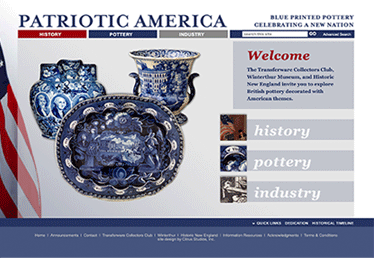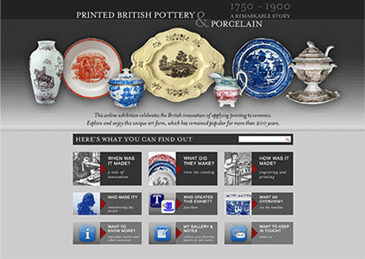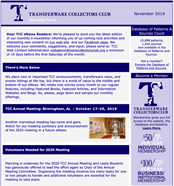


Number Twenty of an Ongoing Series by Dick Henrywood
Please note that the information below has been extensively updated and published on Dick Henrywood’s website www.reynardine.co.uk (select the Research tab then the appropriate article).
The small group of Maritime views listed in the previous column produced very little response so I thought a complete change might be welcome and have chosen to look at a group of numbered patterns. Various potters allocated pattern numbers for their products and included them in their printed marks. Although this practice was adopted in Staffordshire it appears to have been more common in the North East potteries. Perhaps the most prolific of these was William Smith & Co. who had a major trade with Europe, particularly Belgium and Holland (across the North Sea), although his wares are found fairly widely both in Britain and North America.
William Smith & Co. pattern numbers
William Smith worked the Stafford Pottery at Stockton-on-Tees, Yorkshire, from about 1825 to 1855. He is particularly well-known for incorporating the name Wedgwood (Vedgwood or Wedgewood) in his marks and was prosecuted for attempting to pass them off as true Wedgwood wares. It would appear that he started to use pattern numbers for printed wares at a relatively early date and the practice must have continued for some years. I have amalgamated my records with the various patterns which appear in the TCC database and come up with the following list of known pattern numbers:
3 An untitled version of the popular Tea Party pattern
5 “Gondola”
7 “Turkish Pavilion”
9 An untitled pattern featuring two girls, chickens, a dog, and a caged bird
16 An untitled pattern similar to the Minton “Genevese” series, also copied by other potters
21 An untitled pattern with a bird centre within a stylised geometric/floral border
22 An untitled floral pattern
34 “Batavia”
41 “Athens”
63 “Reapers”
64 “Fountain”
65 “Napoleon”
71 “Tourist”
96 “Pastimes” (the first of three series under this title)
100 “Pastimes”
101 “Pastimes”
103 An untitled series depicting old mansions, similar to the “Baronial Halls” series by T.J. & J. Mayer
118 “Chinese Temple”
The format of the pattern number varies. The earlier numbers up to 21 appear with the prefix “No.” (“No.16” for example) but then the number appears without the prefix. The prefix reappears for the three “Pastimes” series. Printed marks are often accompanied by a separate impressed mark, the most common of which reads “W.S. & Co’s / WEDGEWOOD”, some early examples having Wedgwood without the “e”.
As a postscript, Smith did not always incorporate the pattern number in the mark. Some patterns are titled but have no pattern number. It may be that they were never allocated a number, although possibly the number was used in the pottery but not engraved in the printed mark. Titled examples recorded to date are:
“Angling”
“Armorial”
“Bacchus”
“Fruit Basket”
“Lion Antique” (possibly pattern “No.18”)
“Infant Sports”
“Paul and Virginia” (a series of scenes from the novel by Jacques-Henri Bernardin de Saint-Pierre)
“Reapers”
“Select Views” (a series of romantic scenes)
I illustrate just three of Smith’s patterns here with a couple of typical marks, but a good selection of those listed above appear in the TCC database. We would be delighted to hear from anyone who can add to this list of pattern numbers or titles in any way. As usual, good images of any William Smith patterns would be particularly welcome. Responses should be sent to henrywoodshighlights@transferwarecollectorsclub.org.
(Click on images for a larger view.)
Pattern 3. Untitled but instantly recognisable as one variant of the Tea Party design, used by several others potters.
Pattern 16. One of the untitled patterns and its printed mark.
Pattern 101. A typical example from one of the “Pastimes” series together with its printed mark.
Rich with content for ceramic collectors, researchers, authors, curators, and historic archaeologists, the sites are sure to deliver value for their visitors. The exhibition’s curators continue to enhance them and, now, with site application upgrades, including a new magnification feature and upgraded content management capabilities, the TCC and its collaborators are pleased to relaunch these exhibits, all free to a worldwide audience.

Branded Patriotic America, debuted in 2014 in collaboration with Historic New England, and the Winterthur Museum

Launched in 2015 in partnership with the Northern Ceramic Society.
 Not a member but want to receive email updates?
Not a member but want to receive email updates?